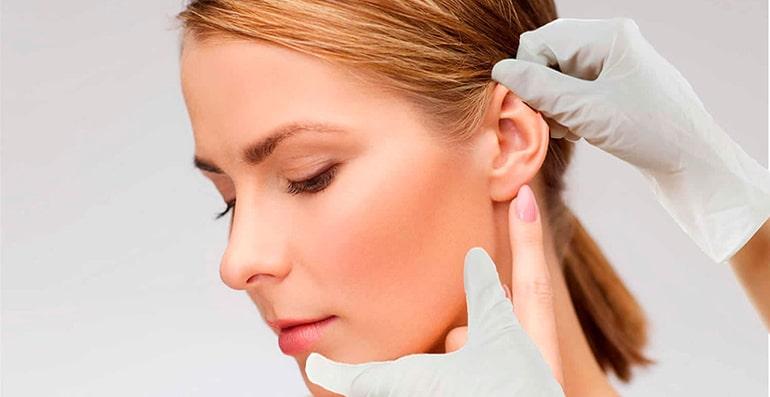The correction of prominent ears needs a surgical procedure called “otoplasty”, which the goal is to reshape the auricles, we think,
are excessively too visible.
The surgery is usually performed on the two auricles but could be done unilaterally.
Surgery, definitively, corrects abnormalities, by reshaping the ear cartilage, in order to obtain well-
positionned, symetrical ears also natural in size and aspect.
An otoplasty can be performed in an adult, in an teenager or, most of the time in a 6-7
years old child, as soon as the child starts suffering of his/her ear aspect.
• TYPE D’ANESTHESIE ET MODALITES D’INTERVENTION
• HOSPITAL STAY AND TYPE OF ANESTHESIA
Type of anesthesia
Three possible proceedings:
• simple local anaesthetic (an analpesic drug is injected locally to
insensibilize the ears)
• local anaesthesia completed by tranquillizing drugs, injected in veins (“vigil” anaesthetic)
• classical general anaesthesia, which puts you asleep
The choice between these different techniques must come after you have discussed it with the surgeon and the anaesthesiologist.
• THE PROCEDURE
Each surgeon is using his own technique, he may adapt to each case, in order to get the best result. But, common surgical steps
have to be used :
• THE PROCEDURE
Each surgeon is using his own technique, he may adapt to each case, in order to get the best result. But, common surgical steps
have to be used :
Skin incisions:
Usually, there are inside the natural retro-auricular fold. But sometimes, some small complementary
incisions may take place at the anteror side of the auricles, hidden inside natural folds.
bending the cartilage framework, which may necessitate deep fine stiches. Sometimes, cartilage cuting or
partial removing is indicated. Finally, the auricles are put back in a good position, in relation to the skull,
and anchored by deep stiches.
Sutures :
Usually, the skin after surgery.
• THE SURGICAL FOLLOW-UP
Pains are usually moderate and if necessary, they can be treated using pain killers or anti-inflammatory
A maintaining and protecting head-band wil be use day and nights for 15 days and then for another few weeks, during night, only.
It will be appreciated within 1 to 2 months after surgery. It is the time needed for the edema to disappear, allowing the ear reliefs
to be clearly seen. After this period of time, only the scar will be red and harden for another few month before toning down.
• POSSIBLE COMPLICATIONS
Even if it is done for aesthetical purpose, an otoplasty remains a true surgical procedure, what means, it can induce the same risks
as any surgery as little it is.
We must distinguish the complications from anaesthesia and the one from surgery.
All things considered, the risks must not be overestimated, but you must be conscious that an operation, even a minor one, always
has some degree of unforeseeable unknown factors.
You can be assured that if you are operated on by a qualified Plastic Surgeon, he will have the experience and skill required to
avoid these complications, or to treat them successfully if necessary







